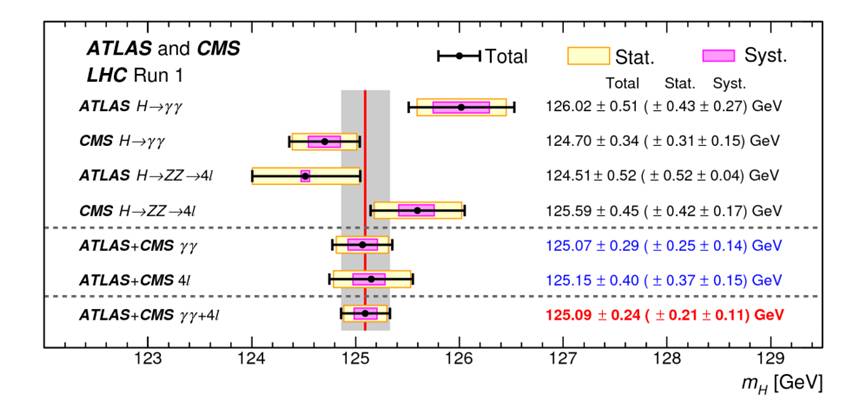In 2006, having gotten convinced that the Standard Model was predicting too well all observations at particle colliders, I put forth the bet that the LHC experiments would *NOT* discover any new physics signal, except a SM Higgs particle. Those $1000 I offered were an open challenge to the majority of my colleagues, who believed and openly argued that the LHC would find Supersymmetric signals and other new things soon after getting started.
The bet was taken by a theorist (Jacques Distler) and an experimentalist (Gordon Watts), and its stipulation required ATLAS and CMS to collect and analyze at least 10 inverse femtobarns of data before the bet could be called one way or the other. It took me 7 years to win and cash the bet, and it was a not so sweet result: I would have much preferred losing it, in fact - it was some sort of "insurance bet": I would have been happier with $1000 less in my pocket and a whole new world of physics to study in front of me. But I had unfortunately predicted this bleak outcome, showing more vision than my optimistic colleagues.
In 2012 I was eager to place new bets on particle physics effects, so I offered the same bet based on the expectation of Run 2 data that the LHC would collect at 13 TeV. So I was very happy when a reader of this blog offered to bet that the Higgs boson signal found by ATLAS and CMS would soon be recognized as two different states. Here is the stipulation of that $100 bet, which I gladly accepted:
If, by analyzing larger datasets, either the ATLAS or the CMS experiments willYou must recall what the situation was shortly after the discovery of the Higgs, when ATLAS in particular was measuring a mass in H->gamma gamma final states which was 2.6 standard deviations away from the mass they measured in the H->ZZ final state. Nowadays the effect has not gone away, but the situation has cleared up a bit - both experiments are willing to combine their results in the two final states, convinced as they now are that they are measuring one and the same thing. Check the graph below:
claim strong evidence or discovery (larger than four standard deviations)
for two distinct resonances in the 120-130 GeV region
in their searches for Higgs-like particles before July 1st, 2015,
Tommaso Dorigo will pay $100 to (X) (name of the better)
If, on the other hand, within the said time frame no such claim will be made by
either ATLAS or CMS or both, (X) will pay $100 to Tommaso Dorigo.
Conceding the bet will entail a written statement on the blog of Tommaso Dorigo,
and the sending of the money through wire transfer or other mean at the
request of the winner.

The graph summarizes Higgs mass measurements by ATLAS and CMS in the two final states which provide accuracy to that parameter determination.
You can see that the CMS and ATLAS measurements in both final states pull in opposite direction, such that the H->gamma gamma mass measurement average is quite compatible with the H->ZZ average. The four determinations once combined provide a very precise measurement, and the overall compatibility of the data is not too bad.
I am now waiting for an acknowledgement that I have indeed won the bet... I will let you know how I will end up spending the money I collect, if I ever do. (I am convinced that one should always immediately spend the money won in bets like this - putting them in one's bank account is like not having ever won them).



Comments